DMM Aneng AN882B+
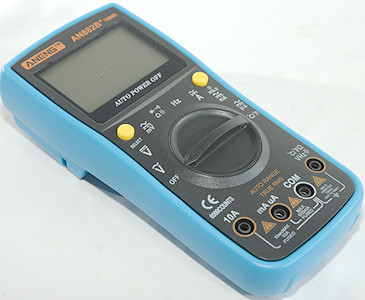
This is a cheap DMM from Aneng, it looks like a downgraded version of AN860B+.
The meter is sold with either red, green or blue sleeve.
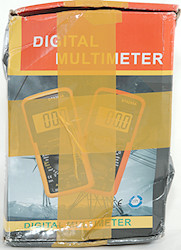

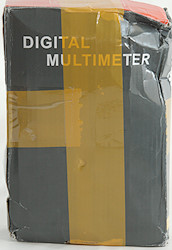

The box is not for this meter and it looks like it got a hard treatment during shipping.

In the box was the meter, standard probes, probes with replace tips, thermocoupler and a manual.
The manual is fairly generic and the same is the specifications, i.e. it do not match this meter fully.



The CAT III rating on the probe is not correct due to the long metal tip.
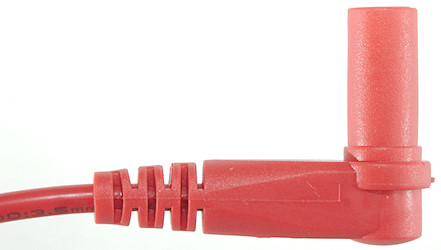
The shroud is a short one.

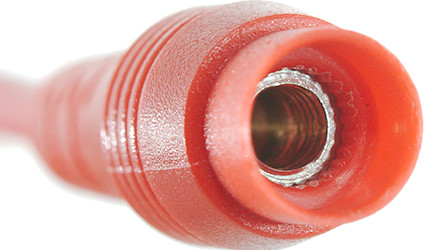
The other probe set is with removable accessories, the probe wires have threads at both ends.
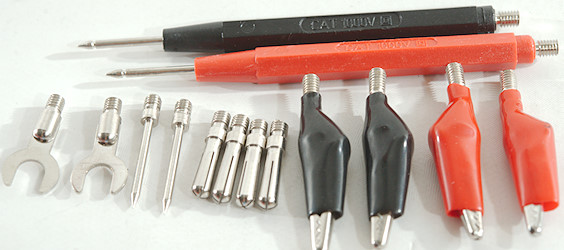
And these accessories can be used to build the desired combination.


The thermocoupler is a cheap model with banana plugs.
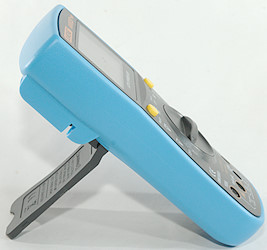
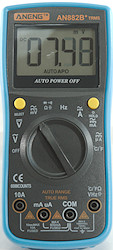
When using the tilting bale the meter is nearly stable enough to turn the switch and push the buttons (If placed on a non-slip surface it will probably be stable enough).
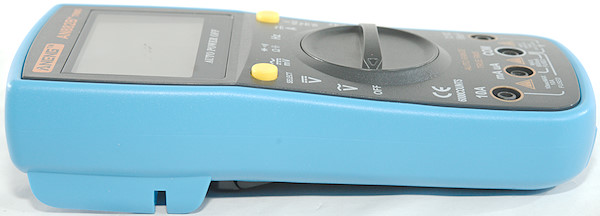

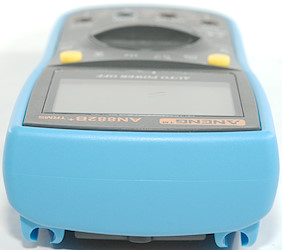
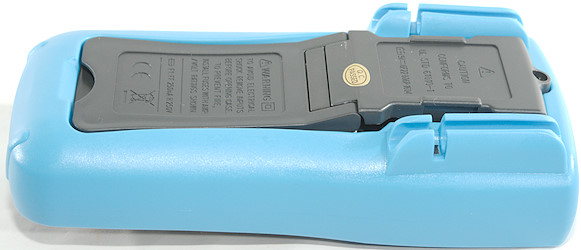
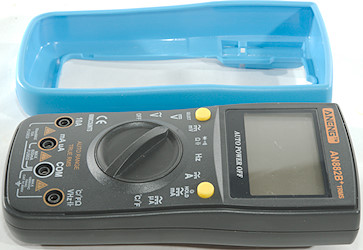
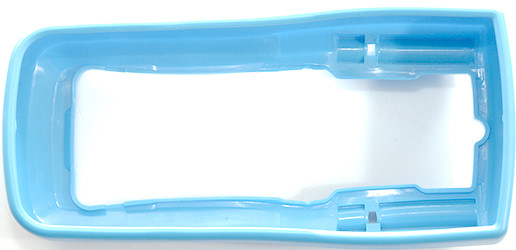
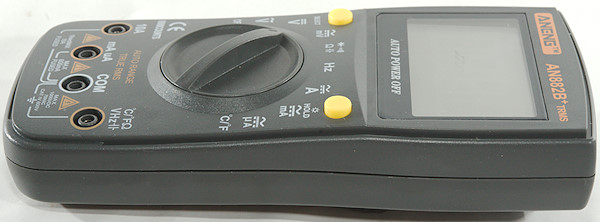
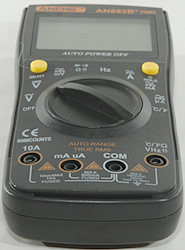
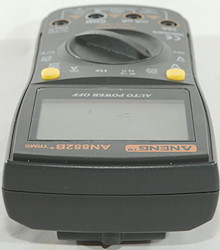

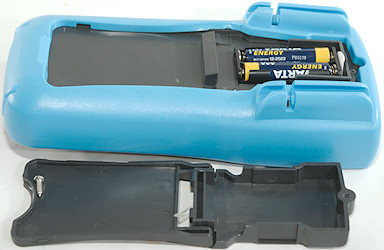
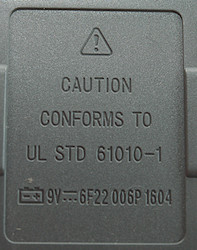
I was a bit surprised about the batteries, the back says a 9V battery.
Display
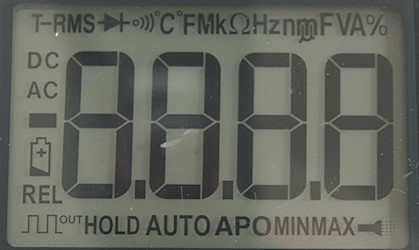
The above picture shows all the segments on the display. Not all the segments are used on this meter.

Typical display with value and range.
Functions
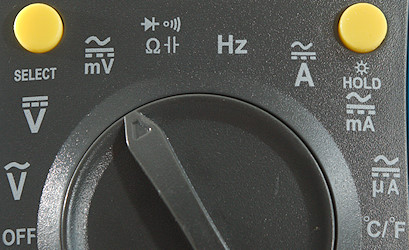
Buttons:
- Select (Yellow): Select modes in ohm, AC/DC in mV/current and Celsius/Fahrenheit in temperature mode.
- Hold (Yellow): Freezes the display, hold down for backlight.
Rotary switch:
- Off: Meter is turned off
- VAC: Show AC voltage
- VDC: Show DC voltage.
- mV: Show DC or AC mV.
 : Resistance, continuity, diode and capacitance
: Resistance, continuity, diode and capacitance
- Hz: Frequency
- A: Current AC and DC. In AC the blue button will show frequency and duty cycle.
- mA: Current AC and DC. In AC the blue button will show frequency and duty cycle. Watch out for burden voltage.
- uA: Current AC and DC. In AC the blue button will show frequency and duty cycle.
- °C/°F: Temperature.
Input
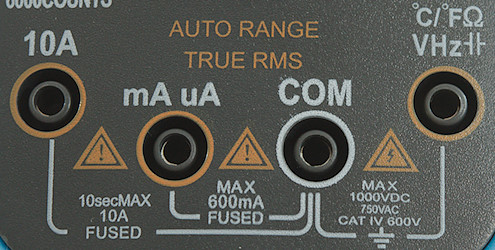
- 10A: High current, it can only withstand 10 ampere for a short time.
- mAuA: The lower current ranges, the selector switch will change between two different shunts.
- COM: The common terminal for all ranges.
- xxx: All other ranges.
Measurements
- Volt and frequency
- At 100mVrms frequency input range is from 1Hz to 4MHz
- At 2Vrms frequency input range can be stretched to 50MHz
- 1 VAC is 5% down at 2.0kHz (RMS will not work at the frequency).
- Frequency input requires a zero crossing.
- Input impedance is 10-11Mohm on DC and AC
- mV range is high impedance for DC up to around 2 volt and 10Mohm for AC
- Frequency input is 10Mohm up to around 2 volt, then the protection clamps to 2kOhm
- Rated voltage overload on volt is 1000VDC/750VAC
- Rated overload on mV and frequency is 550V DC or AC peak
- Current
- On the 6000uA range there is an audible alarm when going above range.
- 10A range will give audible alarm when going above 10A
- 10A range is unfused, even though the front says fused.
- mAuA range uses a 200mA PTC, making it impossible to measure 600mA
- Manual specify both ranges uses 250V fuses.
- Ohm, Continuity, diode and capacitance
- Ohm needs about 3.0s to measure 100ohm
- Ohm is 1.0V open and 0.48mA shorted
- Continuity is fast (About 15ms).
- Continuity beeps when resistance is below 50ohm.
- Continuity is 1.0V open and 0.48mA shorted
- Diode range uses 3.3V, max. display is 3.000V at 0.2mA, max. current is 2.2mA shorted
- 10uF takes about 5 seconds to measure.
- 70000uF takes about 9 seconds to measure.
- Overload protection is rated for 550V DC or AC peak
- Miscellaneous
- Current consumption of meter is 1.8mA for DC and 2.1mA for AC (4.3mA with backlight)
- Meter works down to 1.8V where it turns off (Display starts fading at 2.0V), battery symbol show at 2.4V.
- Reading will be stable until meter turns off.
- Backlight fades with voltage and is just about gone at 2.5V
- The meter usual need a couple of display update to reach the final value.
- Viewing angle is good, except from the top.
- Display updates around 4 times/sec
- Backlight will automatic turn off in about 15 seconds.
- Will automatic turn power off in about 15 minutes.
- Standard probes cannot be pushed fully down.
- Weight is 279g without accessories, but with rubber sleeve and batteries.
- Size is 189 x 89 x 45mm with rubber sleeve.
- Probes
- Probe resistance 62mOhm for one.
- Probe wire is soft and 89cm long.
- Probes with replaceable tips has 43-51mOhm (The two wires measured different) with 4mm plug.
- Probes with replaceable tips has 86cm long fairly soft wires.

A look at the capacitance measurement waveform.

Frequency input resistance depends on input voltage.
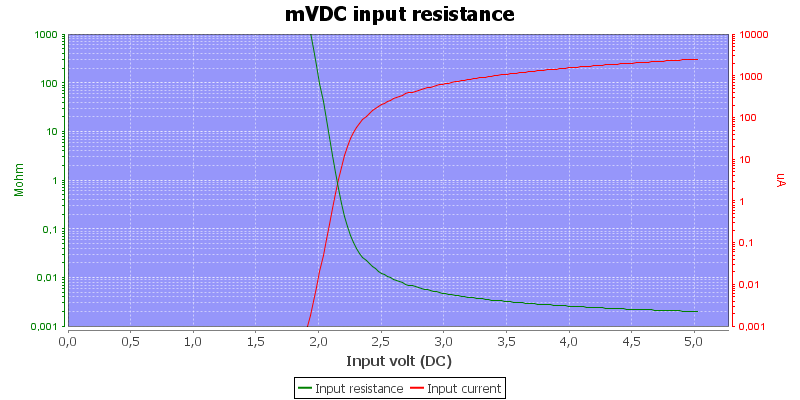
mV DC is high input impedance up to about 2V
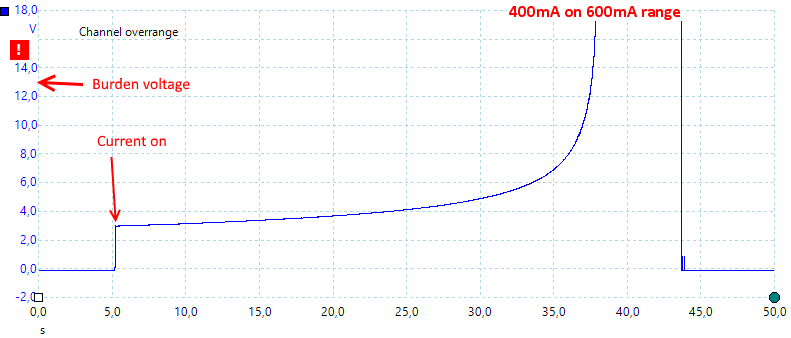
With 400mA on the 600mA range the burden voltage is around 3V and after 10-15 seconds the PTC heats up.
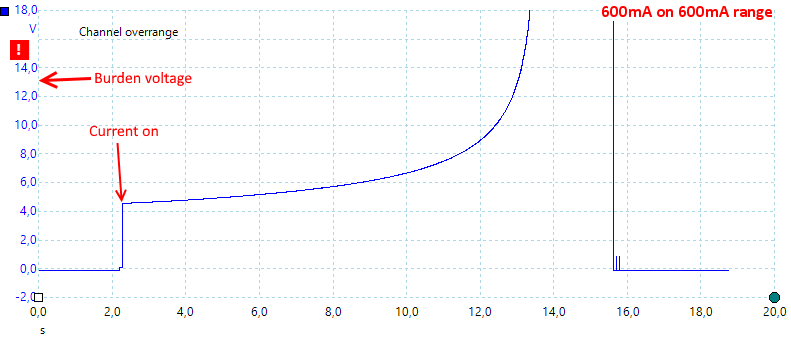
At 600mA the burden voltage is around 4.5V and you have 4-6 seconds before the PTC heats up.

mA range uses a PTC as fuse and it trips below 600mA
uF ranges are at the limit of specified tolerance.
Tear down
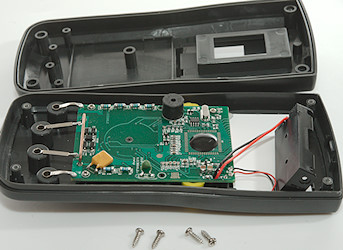
I had to remove the battery cover, the sleeve and four screws to open the meter.

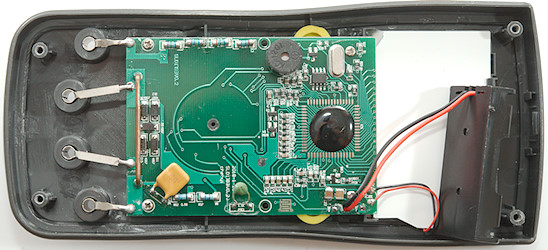
The circuit board is fairly small.


I had to remove four screws from the circuit board to get it out.

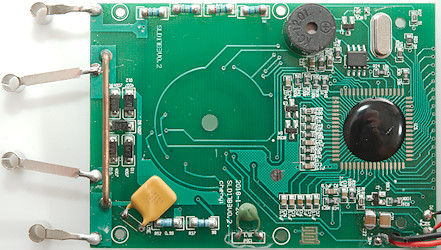
The current input is the usual wire resistor for 10A, this one is fairly large (good) and two resistors for uA and mA (R37 & R52: 99ohm & 0.99ohm), these two resistors are protected by some diodes (D9, D10, D11, D12, D??) and a PTC (FUSE: GR265-200), I wonder if the 200 means 200mA rating? The 10A range is without a fuse.
The voltage input uses four resistors (R44..R47: 4x2.5Mohm), mV, Hz, temperature uses the PTC together with a transistor pair (Q3 & Q4) for input. In ohms this is output and input is trough a small SMD resistor (R43: 900kOhm).
The actual multimeter chip is hidden beneath the black blob (IC5: COP) with a EEPROM (24C02A) next to it.
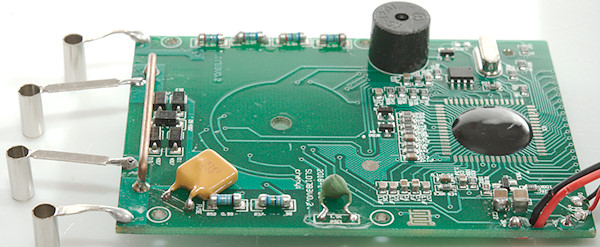
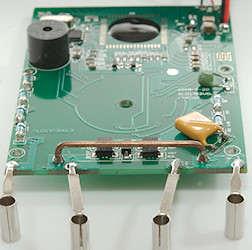
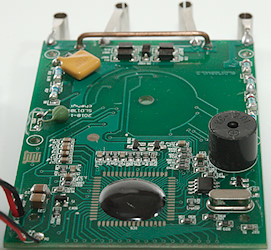
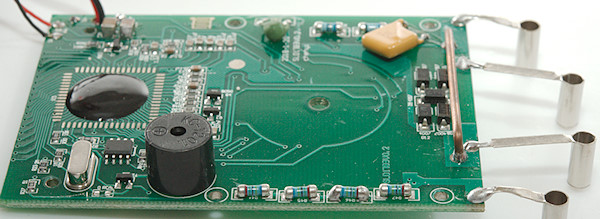
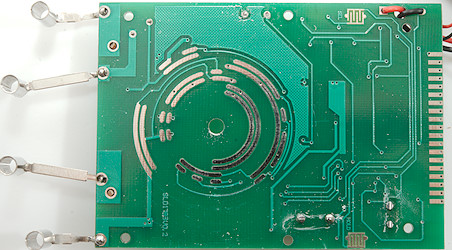
This side only has pads for the rotary switch, the buttons and the LCD display.

Conclusion
This meter is very far from its CAT rating with no 10A fuse and fraudulent markings on the front saying there is one.
The meter measures fine enough, except on the capacity range where the calibration is borderline on many of the ranges. There is the problem with the mA PTC fuse being rated for much lower current than the mA range, the PTC also means a fairly high burden voltage when nearing the trip current.
The meter has a good selection of ranges, but no extra functions and with the above problems I would suggest getting another meter.
Notes
This meter may exist with many different names on it and small variations in functions.
How do I review a DMM
More DMM reviews
 : Resistance, continuity, diode and capacitance
: Resistance, continuity, diode and capacitance
































 : Resistance, continuity, diode and capacitance
: Resistance, continuity, diode and capacitance



















